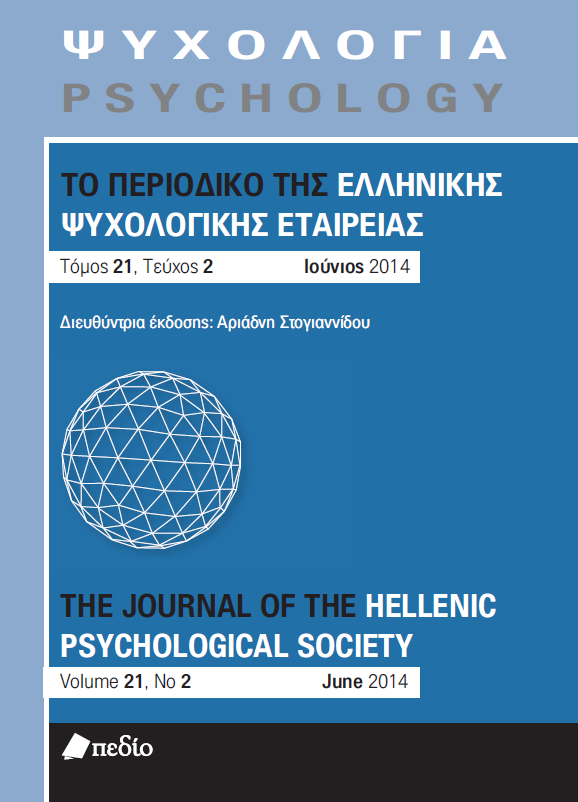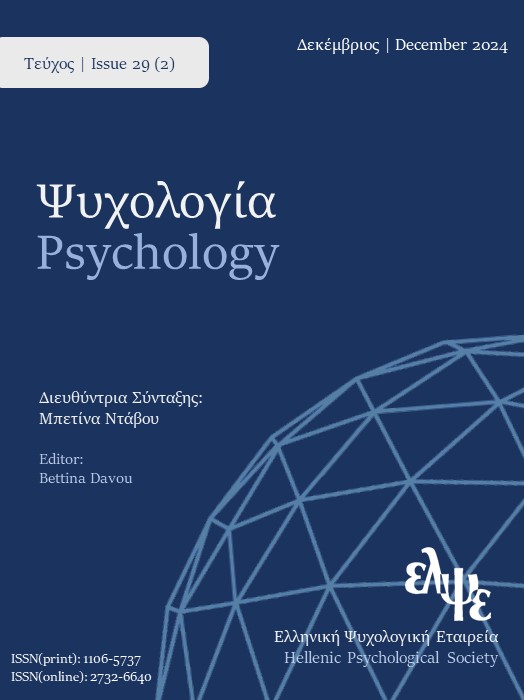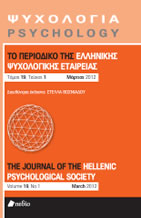Εξελίξεις και συγκρούσεις αναφορικά με την ταξινόμηση των ψυχικών διαταραχών στο DSM-5: Μία ανασκόπηση του επιστημονικού διαλόγου και κριτικής

Περίληψη
Η πέμπτη έκδοση του Διαγνωστικού και Στατιστικού Εγχειριδίου των Ψυχικών Διαταραχών (Diagnostic and Statistical Manual of Mental Disorders, Fifth edition – DSM-5) κυκλοφόρησε το Μάιο του 2013, από την Αμερικανική Ψυχιατρική Εταιρεία, και πυροδότησε έναν ευρύ επιστημονικό διάλογο, καθώς ενέχει ποικίλες αλλαγές σε σχέση με τις προηγούμενες εκδόσεις του. Η παρούσα εργασία αποτελεί μία ανασκόπηση αυτού του διαλόγου, ενώ δίνεται έμφαση στα κύρια σημεία κριτικής και προβληματισμού αναφορικά με ορισμένες σημαντικές αλλαγές. Αρχικά, περιγράφονται η εξελικτική πορεία των διάφορων εκδόσεων τού DSM, οι βασικές αρχές και πρακτικές της παρούσας έκδοσης και τα κυριότερα σημεία αμφισβήτησής της. Στη συνέχεια, εξετάζονται αναλυτικά ορισμένες αξιοσημείωτες αλλαγές σε συγκεκριμένες διαγνωστικές κατηγορίες, και οι συνέπειες που αυτές είναι πιθανό να επιφέρουν στη διάγνωση και την αντιμετώπιση των αντίστοιχων ψυχικών διαταραχών. Εν κατακλείδει, η κεντρική κριτική στην πέμπτη έκδοση του DSM είναι ότι κλιμακώνει την πορεία ιατρικοποίησης των ψυχικών διαταραχών, η οποία χαρακτηρίζει τις τελευταίες εκδόσεις του, παθολογικοποιεί μία σειρά από καθημερινές εμπειρίες και συμπεριφορές, και διευρύνει τον υπό διάγνωση πληθυσμό, ιδιαίτερα στα παιδιά και τους ηλικιωμένους, με κίνδυνο την επέκταση της χρήσης φαρμακευτικής αγωγής σε νέες πληθυσμιακές ομάδες.
Λεπτομέρειες άρθρου
- Πώς να δημιουργήσετε Αναφορές
-
Μούτσου Ε., & Γεωργάκα Ε. (2020). Εξελίξεις και συγκρούσεις αναφορικά με την ταξινόμηση των ψυχικών διαταραχών στο DSM-5: Μία ανασκόπηση του επιστημονικού διαλόγου και κριτικής. Ψυχολογία: το περιοδικό της Ελληνικής Ψυχολογικής Εταιρείας, 21(2), 130–148. https://doi.org/10.12681/psy_hps.23272
- Τεύχος
- Τόμ. 21 Αρ. 2 (2014)
- Ενότητα
- ΣΧΟΛΙΟ

Αυτή η εργασία είναι αδειοδοτημένη υπό το Creative Commons Attribution-ShareAlike 4.0 International License.
Το περιοδικό ΨΥΧΟΛΟΓΙΑ έχει υιοθετήσει μία πολιτική Platinum open-access. Τα έξοδα υποβολής, επεξεργασίας ή δημοσίευσης των εργασιών καλύπτονται από την Ελληνική Ψυχολογική Εταιρεία. Τα πνευματικά δικαιώματα των δημοσιευμένων εργασιών προστατεύονται από την άδεια 'Creative Commons Attribution-ShareAlike 4.0 International'. Οι Συγγραφείς διατηρούν τα Πνευματικά Δικαιώματα και χορηγούν στο περιοδικό το δικαίωμα της πρώτης δημοσίευσης. Η άδεια αυτή επιτρέπει σε τρίτους, να χρησιμοποιούν την εργασία σε οποιαδήποτε μορφή, με την προϋπόθεση της διατήρησης των διατυπώσεων που προβλέπονται στην άδεια σχετικά με την αναφορά στον αρχικό δημιουργό και την αρχική δημοσίευση στο περιοδικό ΨΥΧΟΛΟΓΙΑ. Επιπλέον, κάθε διανομή της εργασίας οφείλει να γίνεται με τους ίδιους όρους διανομής, δηλαδή με την ίδια άδεια Creative Commons.







